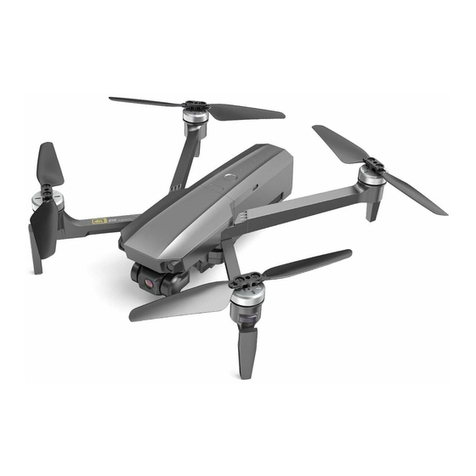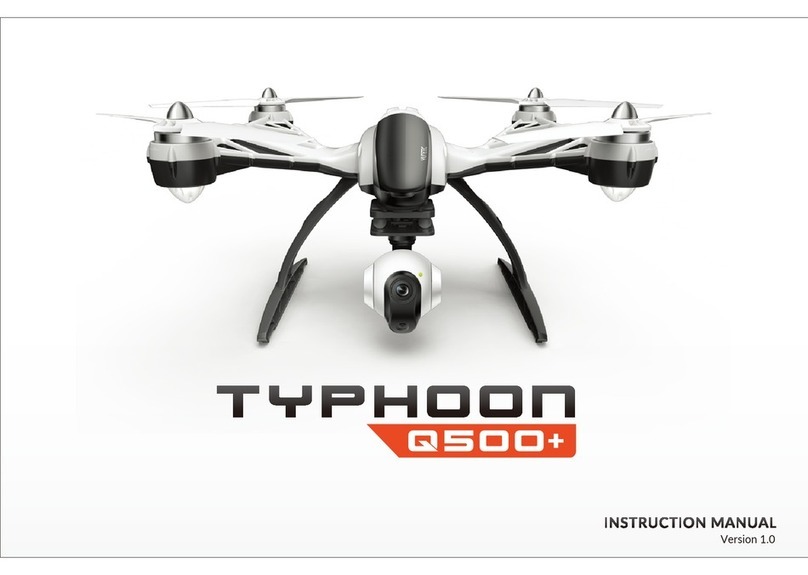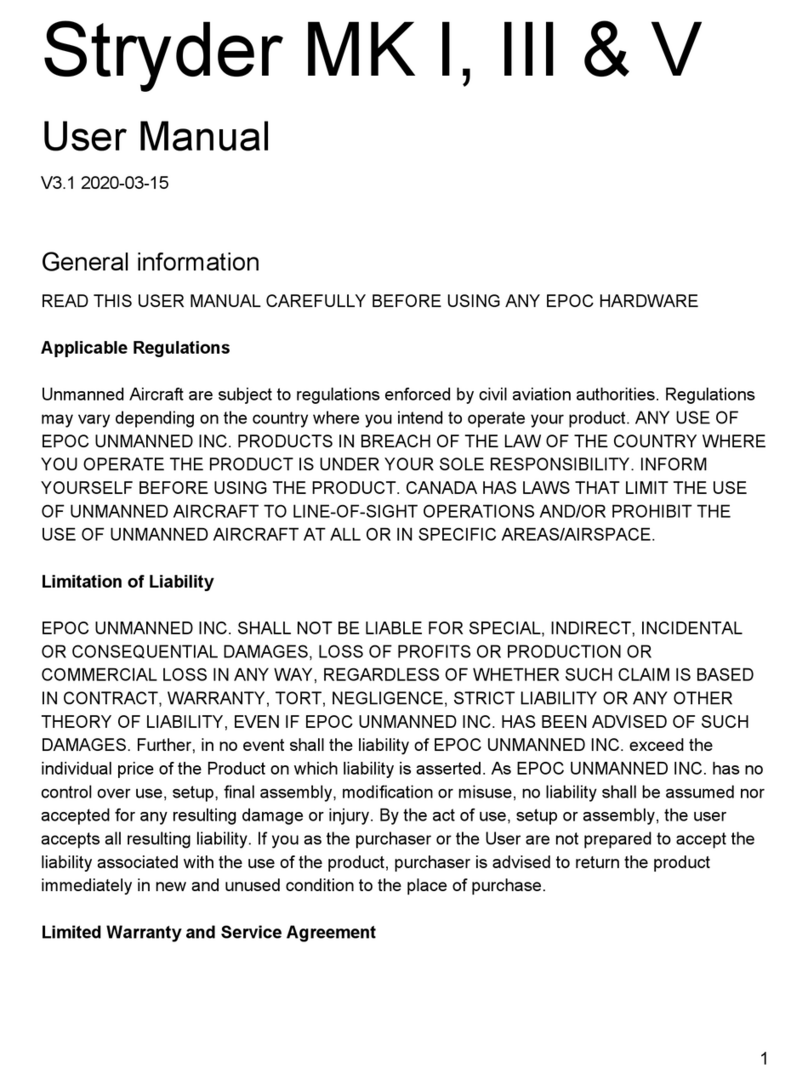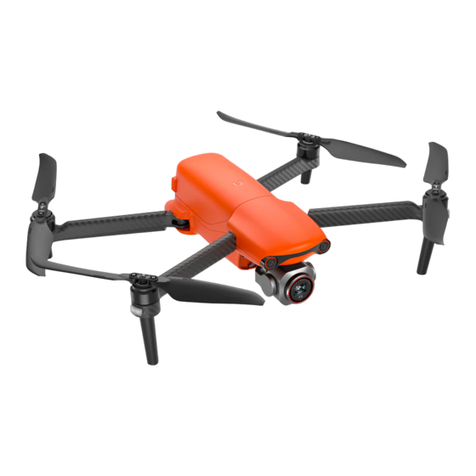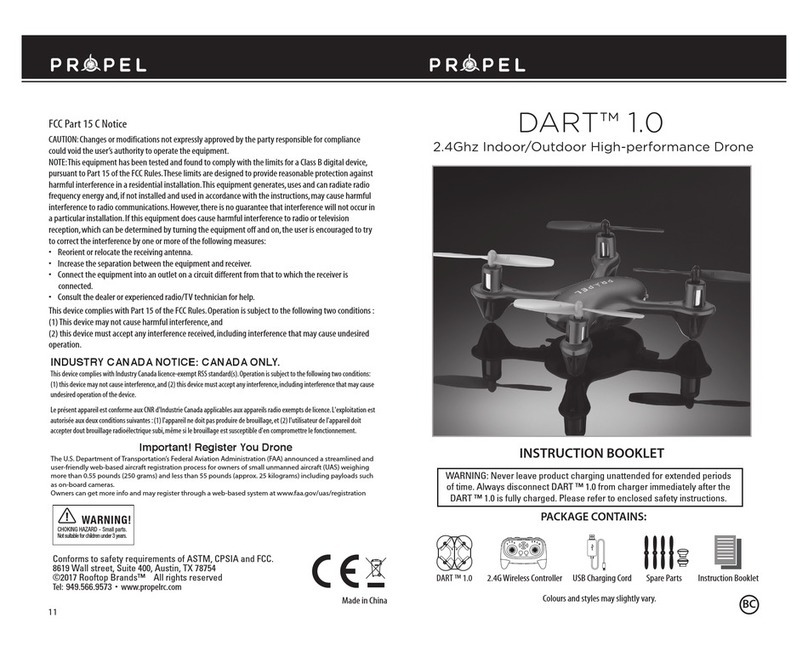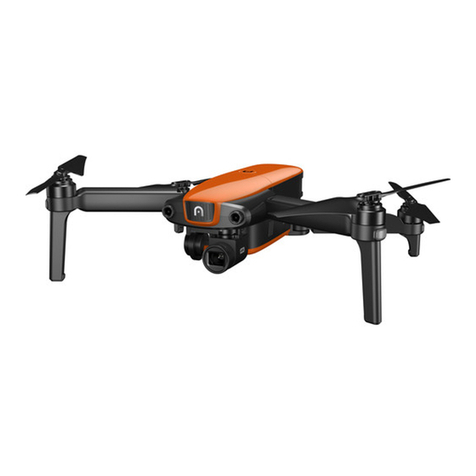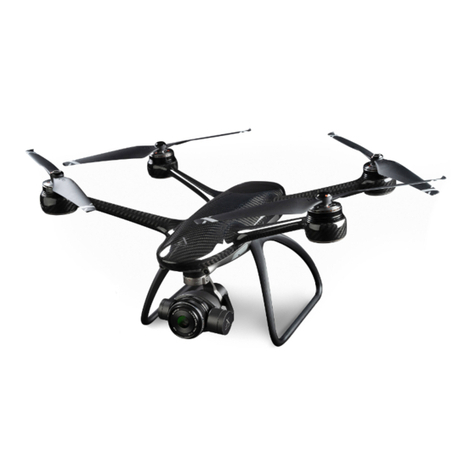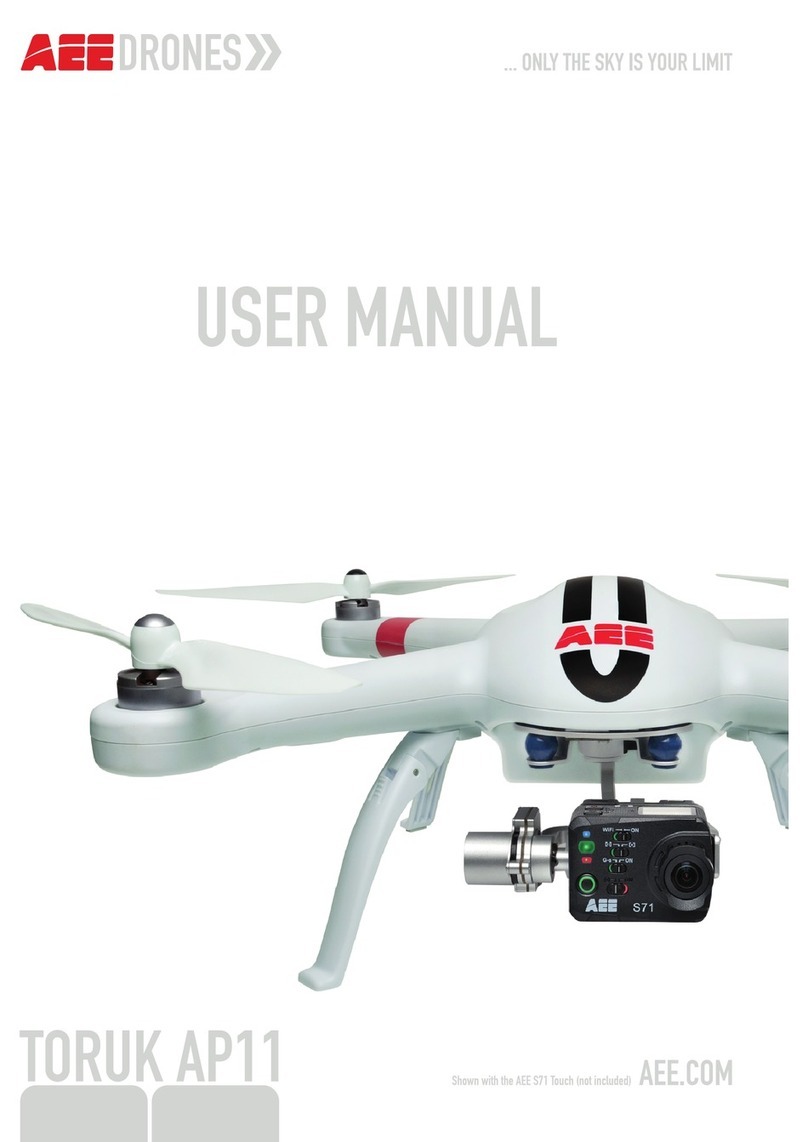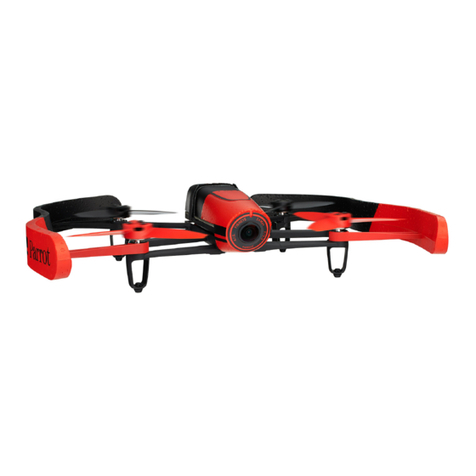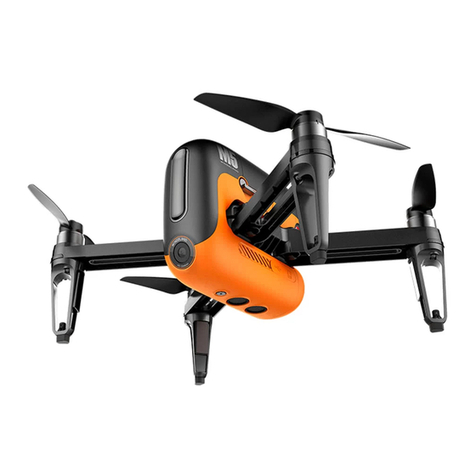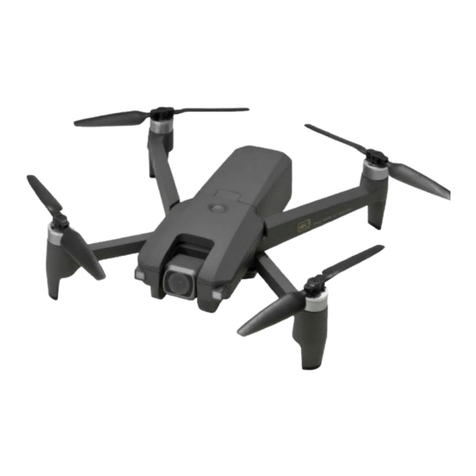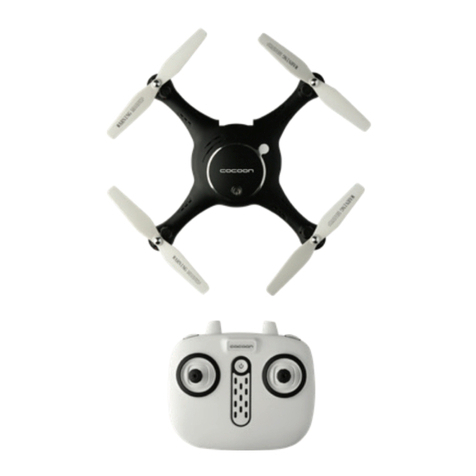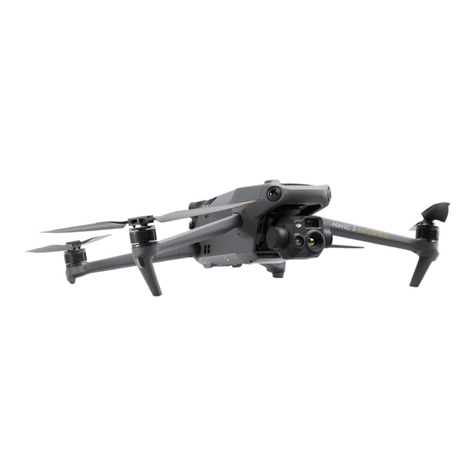Heli-Max 1Si Quadcopter User manual

Entire Contents © 2013 Hobbico®
, Inc. HMXE0830 RTF w/o camera HMXE0832 RTF with camera
1Si Quadcopter
Instruction Manual
®
Please fully read and understand this manual and the operation and all
safety aspects required of you for the safe operation of this product.
Before use, if you feel this product is not for you please return it to your
place of purchase.
Heli-Max products are to be used by ages 14 and over.
Manual Specifications and Description Changes
The instruction manual, warranties and other associated documentation
is subject to change without notice. Hobbico assumes no responsibility
for inadvertent errors to this manual.
WARNING

2
®
INTRODUCTION
INTRODUCTION
Thank you for purchasing the Heli-Max 1Si Quadcopter. We are certain you
will get many hours of enjoyment out of this model. If you should have any
questions or concerns please feel free to contact us at: helihotline@hobbico.
com. For the latest technical updates or manual corrections visit the Heli-Max
web site at www.helimax-rc.com. If there is any new technical information,
changes or important updates to this model a “tech notice” box will appear
on the 1Si product page. Click the “tech notice” box to learn more about this
important update.
When you see this symbol, please pay special attention
and heed all warnings regarding the information within.
®
TECHNICAL SUPPORT
TECHNICAL SUPPORT
Please note that we cannot provide you information on the pricing you will
find in your local retailer’s store for any products.
If you need technical support or have any questions, you can reach us by
one of the following means. When contacting us, please include the name of
the product you are referring to, its stock number and as much information
about your question or issue as possible.
For support outside the U.S. or Canada, please contact the distributor in your
country. If unable to contact the appropriate distributor, please contact us.
However, we are unable to respond to emails in languages other than English.
Email
information as possible when asking your question. Also please be sure
other means of daytime contact in your email.
Phone
1-217-398-8970 Select option 6.
Available Monday-Friday, 8am-5pm
U.S. Central Time.
Fax
1-217-398-7721 Please be sure to
include a daytime telephone number
or return fax number so that we can
contact you.
Regular Mail
If you prefer, we can always respond with a regular mailed letter. Simply write
to us, including a brief explanation of your problem or question along with the
product name you are referring to. Use the Hobby Services address below.

3
®
WARRANTY SERVICE
WARRANTY SERVICE
Heli-Max guarantees this kit to be free from defects in both material and
workmanship at the date of purchase. This warranty does not cover any
component parts damaged by use or modification. In no case shall Heli-
Max’s liability exceed the original cost of the purchased kit. Further,
Heli-Max reserves the right to change or modify this warranty without notice.
In that Heli-Max has no control over the final assembly or material used for
final assembly, no liability shall be assumed nor accepted for any damage
resulting from the use by the user of the final user-assembled product. By
the act of using the user assembled product, the user accepts all resulting
liability. If the buyer is not prepared to accept the liability associated with
the use of this product, the buyer is advised to return this kit immediately in
new and unused condition to the place of purchase.
To make a warranty claim, Hobby Services
send the defective part 3002 N. Apollo Dr., Suite 1
or item to Hobby Services Champaign, IL 61822
at this address. USA
Include a letter stating your name, return shipping address, as much contact
information as possible (daytime telephone number, fax number, e-mail
address), a detailed description of the problem and a photocopy of the
purchase receipt. Upon receipt of the package the problem will be evaluated
as quickly as possible.
®
RTF KIT CONTENTS
RTF KIT CONTENTS
1. 1Si Quadcopter
2. HMX 465 SLT Transmitter
3. Heli-Max 350mAh LiPo
Battery pack (1)
4. USB Charger
5. Extra set of blades, 2 black,
2 white
6. Small Phillips screwdriver
7. 4 Blade Guards with screws,
2 gray, 2 white
8. AA Batteries (4)
9. 2G Micro SD card
(HMXE0832 only)
10.Card reader
(HMXE0832 only)
11.Camera (HMXE0832
only)
1
2
6
7
8
9
10
11
5
4
3

4
®
FEATURES & SPECIFICATIONS
FEATURES & SPECIFICATIONS
Features
●Switchable TAGS-FX™ Sensor Fusion stabilization system
●On board micro digital video camera (HMXE0832 only)
●On board micro snap-shot digital picture camera (HMXE0832 only)
●USB Micro SD Card reader (HMXE0832 only)
●2G Micro SD removable card (HMXE0832 only)
●LEDs for orientation built into frame
●Actual Direction Control flight mode
●Auto Return function
●Optional rotor blade guards
Product Specifications
Size: 125 mm (4.92") Quadcopter (Diagonal from motor
center to motor center)
Motors: 20×7 Coreless (4)
Empty Weight: 31g (1.09 oz) 35g with camera
Weight RTF: 41g (1.62 oz) 45g with camera
Blade Length: 56 mm (2.20")
Overall Length: 138 mm (5.44")
Height: 45 mm (1.77")
Width: 138 mm (5.44")
Camera Specifications
Memory: Accepts Micro SD card
Size: 40 mm ×20 mm ×8 mm L×W×H
Codec Video: Motion JPEG, 1280 ×720, 30 fps, file extension .avi
Codec Audio: PCM S16 LE, mono
Still Image capture: 1280 ×720, 96 dpi, file extension .jpg
®
SAFETY PRECAUTIONS
SAFETY PRECAUTIONS
Operational Warnings
Failure to follow these safety precautions may result in injury
to yourself and others.
●Keep your face and body as well as all spectators away from the rotating
blades whenever the battery is connected.
●Keep loose clothing, shirt sleeves, ties, scarfs, long hair or loose objects
such as pencils or screwdrivers that may fall out of shirt or jacket pockets

5
away from the rotors. The spinning blades of a model of this type can
cause serious injury.
●When choosing a flying site stay clear of buildings, trees and power lines.
AVOID flying in or near crowded areas.
●DO NOT fly close to people or pets. Maintain a safe distance from the
quadcopter.
●Do not alter or modify the model. Doing so may result in an unsafe or un-
flyable model.
●When and if repairs are necessary you must correctly install all components
so that the model operates properly on the ground and in the air. Please
check the operation of the model before every flight to insure that all
equipment is operating and that the model has remained structurally sound.
●Please allow a 10 minute cool down period after each flight so the motor
controller and motors can cool down. Failure to do so may cause loss of
control due to the controller overheating and shutting down.
●Inspect the rotor blades before each flight for nicks. If any damage is found
or if the blades have been damaged, replace the blades before flying the
model again.
●After a crash you must inspect all plastic parts on the quadcopter for
damage before attempting to fly the model again.
Battery Warnings and Usage Guidelines
Please read and understand the following regarding the usage
of LiPo batteries.
●NOTE: Heli-Max Quadcopter battery packs are not
cross compatible with Heli-Max NOVUS brand battery
packs or chargers.
●Through the use of the included LiPo battery you have assumed all risk
and responsibility regarding a LiPo battery and its use.
●ALWAYS unplug your battery from either the charger or Quadcopter after use.
NEVER store your Quadcopter with the battery plugged into the Quadcopter.
●Do not attempt to charge your battery if it becomes swollen or hot.
●It’s best to store your batteries charged and at room temperature. Storing
a fully discharged battery may cause irreversible damage to the battery.
●Never disassemble, puncture or modify the battery pack in anyway.
●Never allow the battery temperature to exceed 150° F [65° C].
●If your battery begins to swell or “puff” during charge or discharge or
becomes damaged in any way, stop using it and contact Hobby Services
at 217-398-0007 to learn the proper way to dispose of your battery.

6
Charge Warnings
●Only use the included charger with the included LiPo battery.
Do not attempt to use the provided charger with NiCd, NiMH
or batteries with other chemistries.
●Do not leave the charger unattended while in use and always charge your
battery in a fire-resistant location.
●Disconnect the battery and remove input power from the charger immediately
if either becomes hot!
●Do not allow water or other foreign objects to enter the charger. Keep the
charger away from moisture and do not submerge in water.
●Please keep all electronic components out of the reach of children!
®
BATTERY CHARGING
BATTERY CHARGING
●WARNING!! The charger supplied with the Heli-Max 1Si
Quadcopter contains protective circuitry. If you experience any
difficulties while charging the battery, please disconnect the
battery from the charger and unplug the charger from the power
source. Allow the battery and charger to rest for two hours as this will allow
the charge protection circuit to reset. If this issue re-occurs during normal
use, please contact technical support for further assistance.
❏ Plug the flight battery into the end
of the USB charger.
❏ Plug charger into a USB port. A
steady red light will glow letting you
know the battery is charging. The light
will flash slowly when the charge is
complete. Remove the battery from
the charger. Under normal operating
conditions, the battery may take up to
60 minutes to recharge. Never leave
the battery attached to the charger
after charging is complete.
NOTE: A fast flash indicates a charge error. This is usually an indication that
your battery is defective and should be replaced.

7
Transmitter Setup
❏ Install 4 AA batteries in the
transmitter by removing the
battery cover from the back of
the transmitter. Double-check the
polarity of each battery before
replacing the battery cover.
❏ Turn the Transmitter on and make
sure that there is a blue light behind
the Heli-Max panel at the top of the
transmitter. The LCD screen should
be on, with a throttle position indicator
and other information.
❏ Make sure the electronic trim
indicators on the display are centered.
®
TRANSMITTER CONTROLS
TRANSMITTER CONTROLS
All controls are described with the tail pointing directly toward you. This is
the best way to fly in the beginning since it keeps the control inputs oriented
the same direction.

8
®
INSTALLING THE BLADE GUARDS
INSTALLING THE BLADE GUARDS
Installing the optional rotor blade guards is recommended. Besides protecting
the rotor blades from damage, these parts can also allow the 1Si to continue
to fly if it brushes up against a wall or other solid object.

9
❏ Slide the guard over the motor and
position the hole for the mounting
screw over the dimple on the top of
the arm.
❏ Secure the guard to the frame with
the included screw.
®
FLYING YOUR 1Si QUADCOPTER
FLYING YOUR 1Si QUADCOPTER
Electric motors are very dangerous. Do not work on the model
while the flight battery is plugged in as interference may cause
the main rotor blades to spin, possibly causing injury.
❏ Turn on the TX465 transmitter. Install
the flight battery by sliding the battery
into the battery compartment. Connect
the battery to the power connector
and tuck the wires on the side of the
compartment. Place the quad on a flat
surface and wait for 2 seconds to allow
the TAGS-FX control board to calibrate.
NOTE: The 1Si will be “ON” at this
point. Your quadcopter has a safe
start feature built in that prevents the motor from activating unless the
throttle stick has been lowered to the lowest position. If the motors won’t
run, please make sure the throttle stick is all the way down and the throttle
trim is at or below center. Wait a couple of seconds and try advancing the
throttle again.
Takeoff
Advance the throttle until the model is at least a foot off the ground and out
of ground effect. If flying outdoors it’s important to stick to light winds. If you
plan to take off and land in grass, place a rubber mat or pad down on the
grass so the small rotating parts don’t get hung up in the grass.

10
Hovering
Once the quad is in the air simply try to keep it in one spot. This will take
some practice. Remember that even a light breeze will have an effect on the
stability of the quad.
Landing
Level the quad into a steady hover and slowly decrease power until it lands.
You might notice as the Quadcopter is ready to touch down it moves around
a little. This is normal as the Quadcopter enters ground effect.
®
BASIC MANEUVERS
BASIC MANEUVERS
Once you are comfortable with hovering in one place start working on
orientations. By this we mean, hover the Quadcopter in all positions, nose
to the right, nose to the left and the nose pointing at you (nose-in). Getting
good at this fundamental discipline will allow you to progress much faster
in some of the more advanced flying maneuvers.
Slow Pirouettes
Move the left stick (left or right) you can rotate the Quadcopter around 360°,
which is called a pirouette.
Forward Flight
Now it’s time to work into basic forward flight. Just take the basic hovering
maneuvers listed above and slowly fly out farther and faster and always
bring the Quadcopter back after one pass. Practice controlled slow flight in
close as well. The more time you spend practicing here, the easier things
will be later on.
®
POST-FLIGHT PROCEDURES
POST-FLIGHT PROCEDURES
Before turning off the transmitter, make sure that all the trim indicators
on the transmitter are centered. If you find that the model is consistently
drifting in one direction, the sensors on the 1Si may need to be re-calibrated
(see Troubleshooting).
Remove the battery from the 1Si. Allow it cool to room temperature and
recharge it. Do not leave the battery connected to the 1Si after the flight is
completed.

11
If the model is to be stored for a long time period, please remove the batteries
from the transmitter to avoid damage to the contacts. If storing the model for
several weeks, the batteries for the quadcopter should be charged to 50%
of a full charge and checked after 3 to 4 months.
®
FLIGHT MODE OPTIONS
FLIGHT MODE OPTIONS
The TX465 transmitter has a dual rate
function. This feature toggles between
a flight mode that reduces the model’s
range of motion to make the 1Si easer
to fly and one that allows the full range
of motion so the 1Si can fly in a more
aggressive manner. To toggle between
these two flight modes, press down
on the right control stick and release
it. When the transmitter is in low rates,
the ellipse in the lower center of the
LCD screen will show a half ellipse and emit a single low pitch single beep.
For high rates, the ellipse will be complete and the transmitter will emit a
single high pitch beep.
Adjusting the Flight Sensitivity
You can also make the transmitter for the 1Si more or less sensitive by
changing the control setting. To do this, press and hold the right stick down.
When the transmitter starts to beep continuously, move the throttle up or
down to adjust the sensitivity percentage which will be indicated on the LCD
screen. A higher value will make the controls more sensitive. When you have
the desired setting, release the right stick and return the throttle to 0%. We
have found that 30% is good all-around setting. Warning: If this value gets
bumped to 0 your quadcopter will respond very slowly to any right stick input.
Braking
When the 1Si is turned on, it will be in the normal flight mode. In this mode,
the control board will apply “Braking” to level the 1Si and slowly return the
model to a hover when the right control stick is centered. This feature was
added to reduce the chance that the 1Si will be damaged in a crash.
The Braking feature can be turned off by pressing the F Mode button. To
indicate that the 1Si in now in the manual mode, the LED on the back of the
1Si will flash twice quickly, turn off for a second, flash twice quickly again,
then remain steady. When the 1Si is in this mode, the model will continue
moving when the right stick is centered.

12
To return to the normal flight model, press the F Mode button again. The rear
LED will flash twice, stay steady for a second, flash twice again, and then
remain steady. This sequence indicates that the accelerometers and the
Braking function are active again.
Actual Direction Control
When the ICM button is held down for a couple of seconds, the rear LED
on the 1Si will start to flash slowly. This indicates that the Actual Direction
Control mode is active and the pilot’s position is now the reference point for
the controls. In this mode, moving the right stick forward and backward will
move the model closer or farther to the pilot’s position. A stick movement to
the left or right will make the model move left or right. In this mode, it does
not matter which direction the front of the 1Si is facing. The antenna must be
pointed towards the 1Si at all times for this feature to work correctly.
To turn this feature off, hold the ICM button down again for couple of seconds.
The rear LED will become steady to indicate that the model is back in normal
flight mode.
Auto Return
When the ICM button is pressed quickly and released, the 1Si will enter the
Auto Return mode. The rear LED will flash quickly and model will start to fly
toward the transmitter. The pilot can use the throttle to control the altitude,
but any movement with the right stick will cause the model to return to the
normal flight mode. When the model gets close, the pilot should expect to
use the transmitter to slow the 1Si and bring it to a hover.
®
CAMERA OPERATION
CAMERA OPERATION
The camera will be in VIDEO mode when it is first powered up. Press the
VIDEO button to start recording a video. You will see the LED on the side of
the camera flash slowly while the video is being captured. To stop recording
and store the video, press the VIDEO button again. The LED will stop flashing
to indicate that the camera is ready for use. If the card is removed or the
battery unplugged while the camera is recording, the video will NOT be
saved on the card.
Before the camera can take a photo, it must be in the Picture mode. Press
the PICTURE button one time, to change the mode. The LED on the camera
will remain steady while the camera mode is changed. Press the PICTURE
button to take a photo. You will notice that the LED will flash rapidly as the
picture is recorded and stored on the micro SD card. When the LED stops
flashing, the camera is ready to take another photo. If the Picture button is
pressed while the LED is flashing, the camera will not capture another photo.

13
The VIDEO button must be pressed once to change modes before the camera
will capture a video.
Installing the MicroSD Card
Remove the SD card from the
protective case. Flip the model over
and push the SD card into the slot on
the side of the camera module. When
the card is correctly installed, it will
click. To remove the card, simply press
on the card again and the inner spring
system will help eject the card. Note:
The card must be in place to capture
video or Pictures. The camera has no
internal memory.
Downloading the video and pictures from the camera:
Install the MicroSD card into the reader.
Plug the reader into the USB port of
your computer.
The USB connection will be auto
recognized and the files ready to be
transferred.
At this point you can copy or transfer
your files to your folder structure.
®
TROUBLESHOOTING
TROUBLESHOOTING
PROBLEM: 1Si does not react to any stick movements.
Solution 1: Make sure that the battery voltage is above 4.0 volts
Solution 2: If the LED on the rear of the model is not steady, unplug the
battery and turn off the transmitter to allow the control board to reset itself.
After about a minute, turn on the transmitter and reconnect the battery.
PROBLEM: Flies with poor power or buzzes.
Solution: One of the props may be bent. Carefully bend it straight.
PROBLEM: You notice that one of the motors spins noticeably slower
or feels tight.
Solution: Replace the motor. This is done by removing all 4 props and

14
loosening the screws holding the frame together. Remove the top of
the frame and unplug the defective motor wire from the control board.
The LED board can be popped off the alignment posts with a small
screwdriver. The motor will slide out of the frame and the new motor/
LED board can now be installed. A couple of small pieces of tape will
hold the LED board in place.
PROBLEM: The 1SI will not return directly to you in Auto Return mode.
Solution: Calibrate the transmitter and or the control board.
Control Board Sensor Calibration
Press and hold down on the right stick assembly. While holding the right
stick down, press down on the left stick assembly 4 times. Release both
stick assemblies and press up on the throttle trim button. The rear LED
on the 1Si should flash rapidly. When it stops flashing, press down on
the left stick assembly to exit the calibration mode. This procedure will
usually correct a consistent drifting problem when flying the 1Si. If you
still have problems with drifting, the props and motors should be checked
for damage.
Transmitter Calibration
Press on the ICW button while turning on the transmitter. The display will
show a “1” briefly then display a “2”.
Place the transmitter down on its
back with the antenna pointed
away from you. Slowly rotate
the transmitter clockwise three
times, then three times counter-
clockwise.
Pick the transmitter up by the
sides and rotate it so the antenna
moves toward you. Rotate it three
times, then three more times in the
opposite direction.

15
Hold the transmitter by the
antenna and bottom with antenna
pointed away from you. Rotate
the transmitter left to right three
times. Rotate it three more times
from right to left.
Hold the transmitter by the upper
right corner and lower left corner
so the antenna is pointed 45
degrees to the right. Rotate the
transmitter three times with the
antenna moving toward you, then
three more times in the opposite
direction.
Put the transmitter down with the antenna pointed away from you and
push the ICW button. The display should read “0”.
Press the F Mode button. The display will indicate 90 and the transmitter
should be rotated so the antenna
is at 90 degrees. Each time the
F Mode button is pressed, the
display will increase 90 degrees
and the transmitter should be
rotated to that position before the
button is pressed again. When the
display reads “0”, press the F Mode
button to exit the calibration mode.
This procedure will usually correct problems with the Auto Return or
Actual Direction Control modes. If you continue to have problems, please
try the model in another area. There may be some interference in your
flying location that is affecting the sensors.

REAR LED CODES
1 Long, 3 Short, Off, 1 Long, 3 Short …
Steady
1 Short, Off (rapidly flashing)
1 Long, Off (slowly flashing)
2 Short, Off, 2 Short, Remains ON
2 Short, 1 Long, 2 Short, Remains On
Control board is not linked with transmitter
1Si is ready for flight
Auto Return mode is active
Active Direction Control mode is active
1Si is changing to Manual Flight mode
1Si is changing to Normal Flight mode
THIS SIGNAL MEANS THAT THE
PROBLEM: The Camera System will not take a photo or start recording
a video.
Solution 1: Install the micro SD card if it is not in the slot.
Solution 2: Eject the card and check for any debris on the contacts.
Solution 3: Make sure card is OK by putting the card in reader and
checking on your PC.
®
MAINTENANCE
MAINTENANCE
When installing the rotor blades on the 1Si, please use this photo as a guide.
There is also an arrow molded on the frame to show the direction the rotor
blades will spin.

17
®
REPLACEMENT PARTS
REPLACEMENT PARTS
Key Part No. Description
1 HMXE2203 Blade Guard (4)
2 HMXE2202 Rotor Blades Black / White
3 HMXE2244 Body / Frame Gray
4 HMXM2053 TAGS-FX Controller Board
5 HMXE2243 Motor / LED Right Front Blue
6 HMXE2242 Motor / LED Left Front Blue
7 HMXE2241 Motor / LED Right Rear Red
8 HMXE2240 Motor / LED Left Rear Red
9 HMXE2180 Control Board Dampeners
10 HMXE2245 Receiver Mount
11 HMXP1015 LiPo 1S 3.7V 350mAh
12 HMXZ0001 Video / Picture Camera
13 HMXE7339 Screw Set
14 HMXE2246 Landing Pads (4)
HMXJ2029 TX465 Transmitter SLT
HMXP2023 USB Charger
HMXZ0002 USB Micro SD Reader

18
®
EXPLODED VIEW
EXPLODED VIEW
2
3
2
3
4
6
5
7
8
9
10
11
12
13
13
13
14
1
13
1

19

20
Entire Contents © 2013 Hobbico®
, Inc. HMXE0830 RTF w/o camera HMXE0832 RTF with camera
®
Other manuals for 1Si Quadcopter
1
Table of contents
